"New" Thoughts on Cooking Chicken
CA Kate z9
last year
Featured Answer
Sort by:Oldest
Comments (20)
Related Discussions
Cooking a chicken to use for casseroles......
Comments (42)Oh, no, dirtgirl, I don't mean undercooked!! I know what that is (had an Aunt you don't want to know about)! The "wet" taste thing is more about it being very moist without the roasty flavor. Or maybe it's without the wine flavor--this is all memory. I haven't taste tested or anything. Though to be sure I should try both water poached and wine poached. I think the chicken breasts I have for tomorrow are going to be breaded and baked, however, not sent to the test kitchen. ;) The ch'ck'n'd'mplns (bad dialect, but it's not "chicken and dumplings" all spelled out) I was talking about is a stewing chicken served in gravy with softball sized dough balls. The d'mplns are pretty good, and the gravy is very chickeny and great (though could use some seasoning), but the chicken tastes...wet. It's cooked. Actually, I think my grandmother's boiled chicken was similar in texture, but it was very salty so wet wasn't the dominant impression. None of this matters. I'm just talking about one dish made by one person that I don't like. Okay, please understand that the bad chicken cooking is from the other side of the family!! ROTFL!!...See MoreChicken stock: hours of simmering vs. pressure cooking
Comments (22)I stumbled on this thread looking for recommended time to pressure my duck stock and want to thank you all for your lovely insights. I usually make poultry stock by the five hour barely simmering method and get very clear, highly gelatinous stocks. I've not tried PC because I knew boiling stock makes it cloudy. Well, heck. I didn't need this duck stock to be clear so now was the time to experiment with my new PC. I see that some folks have gotten cloudy stock and some clear. Mine is rather cloudy and I notice the fat layer on top seems to be rather scummy. I think next try I'll bring the pot to a simmer and go through the skimming exercise before adding the veges and bringing up the pressure. I further wonder if keeping the temp as low as possible while maintaining pressure would help....See MoreHow do you cook chicken for a recipe?
Comments (23)There is a difference between poaching and simmering. I would not poach a chicken but simmer it. Found this online. Poaching Cooking in liquid with a temperature ranging from 140F to 180F is called poaching and is typically reserved for cooking very delicate items like eggs and fish. At the correct temperature, the poaching liquid won't show any visible signs of bubbling at all, though small bubbles may form at the bottom of the pot. This means that the best way of checking that the temperature is correct is with an instant-read thermometer. Simmering Simmering is cooking in liquid that's a bit hotter than poaching from 180F to 205F. Here we will see bubbles forming and gently rising to the surface of the water, but the water is not yet at a full rolling boil. Because it surrounds the food in water that maintains a more or less constant temperaure, simmering cooks food very evenly. It's an excellent choice for culinary preparations including stocks or soups, starchy items such as potatoes or pastas, and many others. One of the downsides to cooking this way is that it can cause the food to lose vitamins and other nutrients by leaching into the cooking liquid. Boiling The hottest of these three stages is boiling, where the water reaches its highest possible temperature of 212F. It's actually the least likely of the three to be used for cooking. That's because the violent agitation caused by the rolling boil can be too rough on food and will often damage it. Water at a full boil would be a bad choice for cooking an egg outside its shell, as we do when preparing poached eggs, because the agitation would cause the egg to fall apart. The same holds true for delicate fish as well as some pastas. Sue...See MoreWhat's your favorite way to use cooked/leftover chicken?
Comments (21)I make several of the things listed here, but I also make the following: Chicken & black bean burritos: Preheat oven to 350°. Mix together: - 1 c. cooked chicken, pulled apart - 1 can black beans, drained - 1 c. sweet corn (I use frozen) - canned salsa to moisten everything - about 1/2 t. cumin and 1 t. chili powder Lay out six flour tortillas, and split the chicken/bean mixture equally among them, laying it in a stripe down the middle of each tortilla. Sprinkle shredded cheese on top of the chicken/bean mixture, then roll up and put side-by-side on a cookie sheet. Spread some more salsa and shredded cheese on the tops of the burritos, then bake for about 30 minutes, until hot. My other use for cooked chicken is stir-fry: Cut up about 1 cup chicken in cubes or smallish pieces. Then cut up whatever vegetables you have on hand, raw or cooked, into approximately even-sized pieces. I always use an onion to start, and will often use carrot, celery, broccoli, sweet red peppers, zucchini, whatever. Heat a wok or big frypan over high heat, and add about 2 T. oil. While this is heating, mix up a simple sauce of about 1/2 c. cold water, 1 heaping T. cornstarch, and some ground ginger and soy sauce. I mix it in a Tupperware container with a tight-fitting top so I can shake the mixture. Now, when the oil is hot, start adding vegetables. Start with the onions, cook until soft but not done, then begin adding other vegetables. Add the ones that need to cook longer first, and the ones that don't take long later. Add the chicken near the end, as you just have to heat it. Keep everything moving, using a spoon or spatula. When everything is cooked, turn down the heat to medium-low and add the sauce mixture. Cook for a minute or two, until it's hot and thickened. Serve over rice....See MoreCA Kate z9
last year- CA Kate z9 thanked dcarch7 d c f l a s h 7 @ y a h o o . c o m
CA Kate z9
last yearlast modified: last year
Related Stories
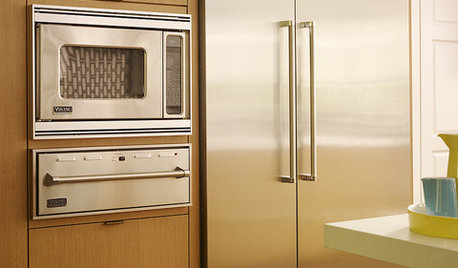
KITCHEN DESIGNA Cook’s 6 Tips for Buying Kitchen Appliances
An avid home chef answers tricky questions about choosing the right oven, stovetop, vent hood and more
Full Story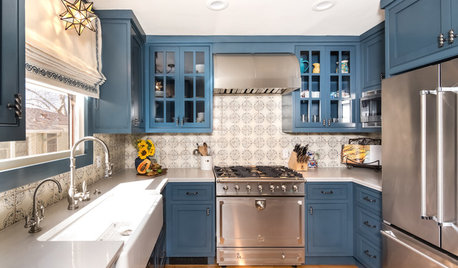
KITCHEN OF THE WEEKKitchen of the Week: 112 Square Feet Laid Out for 2 Cooks
A thoughtful new design lets this couple cook comfortably in tandem and includes room for a much-needed pantry
Full Story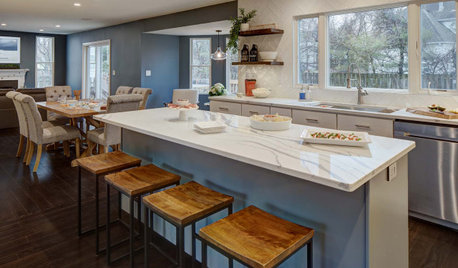
KITCHEN DESIGNKitchen of the Week: Ready for Cooking, Music and Game Nights
A designer knocks down walls to give a New Jersey couple the open and casual space they desired
Full Story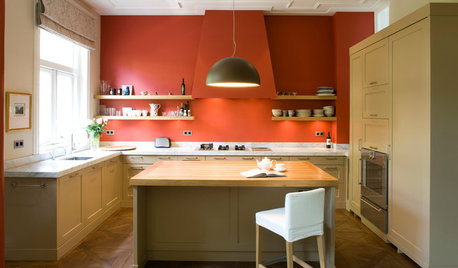
KITCHEN DESIGNCooking Up Color: 9 Places to Use Orange in a Modern Kitchen
See how this glowing color can create a tasty, zesty design
Full Story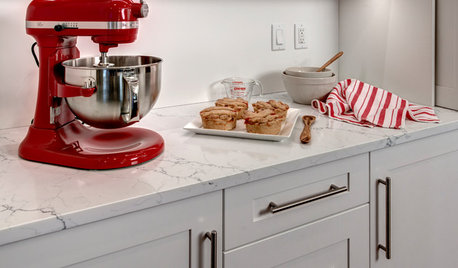
HOLIDAYS10 Holiday Gifts Perfect for the Home Cooks on Your List
Check out these kitchen gift ideas, from budget picks to splurges
Full Story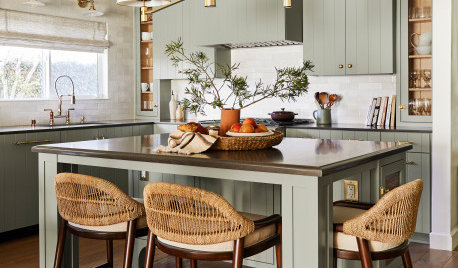
KITCHEN MAKEOVERSKitchen of the Week: Three Generations Cook and Eat Together
An interior designer helps a family create a functional layout with a warm and timeless look
Full Story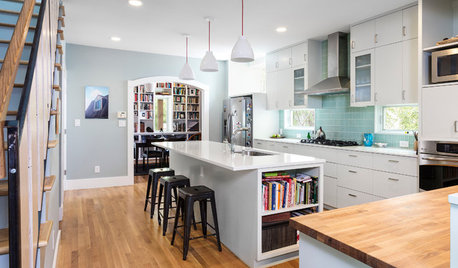
MOST POPULAR6 Kitchen Flooring Materials to Boost Your Cooking Comfort
Give your joints a break while you're standing at the stove, with these resilient and beautiful materials for kitchen floors
Full Story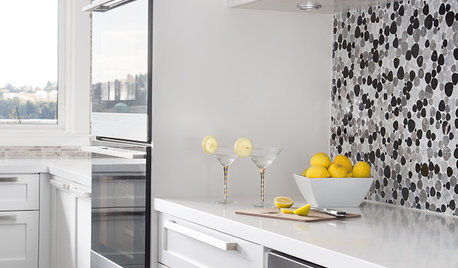
KITCHEN DESIGNNot a Big Cook? These Fun Kitchen Ideas Are for You
Would you rather sip wine and read than cook every night? Consider these kitchen amenities
Full Story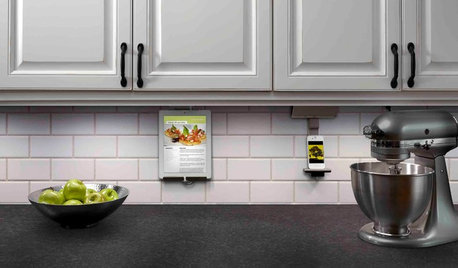
KITCHEN DESIGNHouzz Call: What’s Cooking in Your Kitchen?
Most of us turn to recipes, videos and culinary shows when we cook. Where do you set your cookbook, tablet or TV screen?
Full Story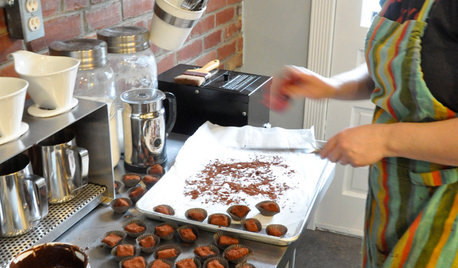
KITCHEN DESIGNLove to Cook? We Want to See Your Kitchen
Houzz Call: Show us a photo of your great home kitchen and tell us how you’ve made it work for you
Full StorySponsored



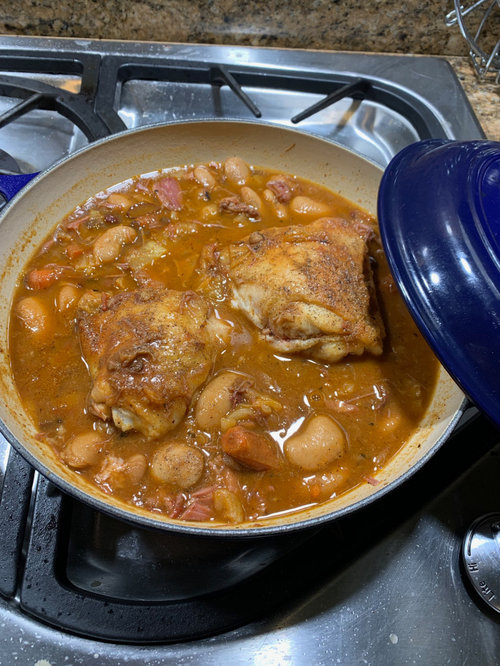
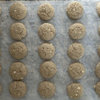

artemis_ma